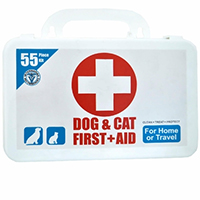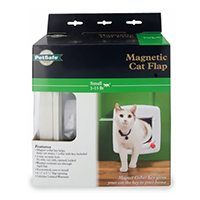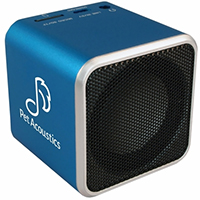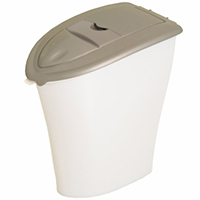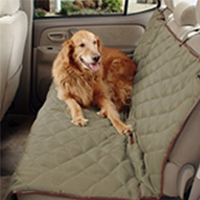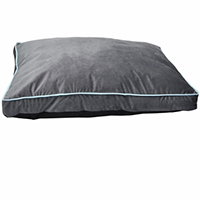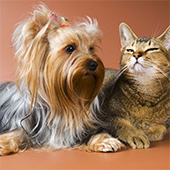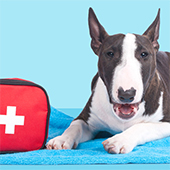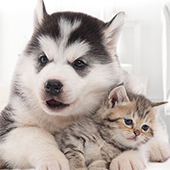Managing a pet family requires a lot of care and effort but is incredibly rewarding at the end of the day. Whether you're taking care of two dogs or a full-fledged urban farm, these 20 Tips on How To Organize For Living with Multiple Pets are guaranteed to help make a life for you and your pets a walk in the park.
1. Provide Multiple Beds
Place several pet beds around the home so every pet has a place to nap. Multiple beds can make the sofa less tempting. Shop pet beds here.

2. Cover Furniture.
Place fleece blankets and throws on your couch and chairs to keep pet hair to a minimum. It’s a good idea to get a cover for your car too - in case your pooch gets into the mud at the dog park! Shop car seat covers here.
3. Store Food in Sealed Containers.
Label plastic bins for different food types. Make sure to store them in the pantry or on a kitchen counter shelf. This will keep feeding time neat and organized! Shop pet food storage bins here.

4. Separate Feeding Locations.
To avoid food hostility, try to feed pets in different rooms, since cats and dogs can be territorial. Some pets do great eating near one another - but if you sense tension, it’s best to separate your furry friends to avoid an unneeded accident.
5. Organize Pet Toys.
Chew toys should be kept in a basket inside the house while tug toys should be kept outside to avoid rollicking dogs getting raucous in the home. In addition, keep squeaky toys inside at night to avoid upsetting sleeping neighbors. A toy basket is a great way to keep toys organized.
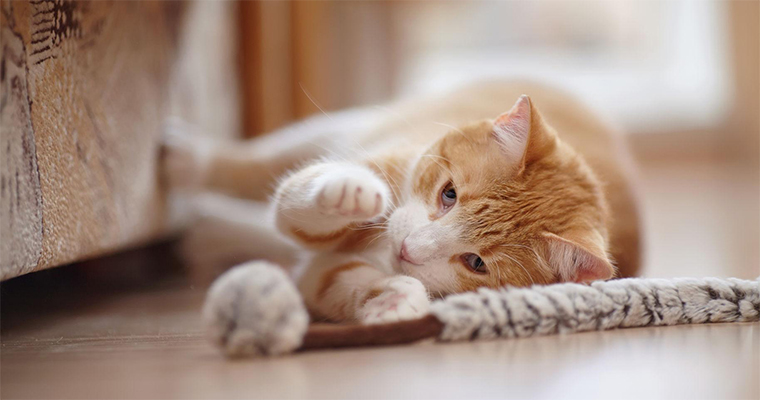
6. Coordinate Leashes and Supplies.
Place a coat rack by the front door for leashes, poop bags, and those cute doggie sweaters. It’s fun to get creative with these too! Making labels or framing photos of your dog to hang over the hanging rack is a fun and excellent way to personalize the space!
7. Encourage Slow Introductions.
We know what you’re thinking! We all wish our pets would love one another and get into adorable cute situations, but this does not happen right away. When it comes to introducing new pets into your home of furry friends, it’s important to let them get to know each other through a door or baby gate. This will let them become familiar with each other while preventing any accidents from happening.
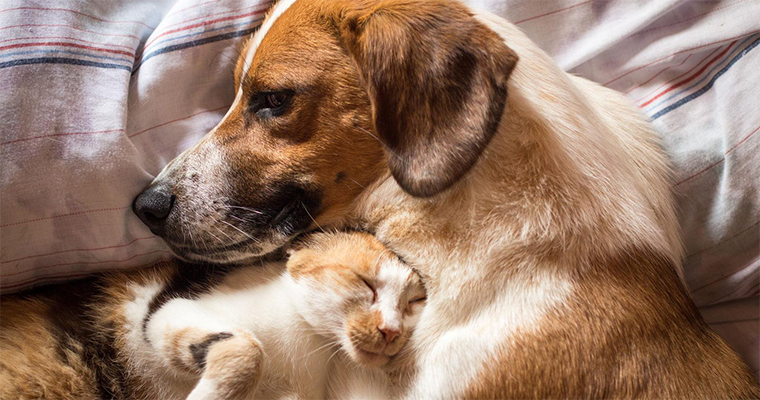
8. Rethink Expensive Furniture.
You may want to go for endurance rather than style on that sofa or expensive rug. Multiple pets increase the likelihood of the damaged furniture. The last thing you want to come home to is a damaged brand-new couch. Sure Fido may blame the cat… and the cat may blame the dog.. But no matter who did it - your new couch is gone!
9. Prepare for Muddy Paws
Keep a bin of towels or baby wipes by the front/back door along with a spray bottle to swiftly clean up muddy paws. There are many types of pet wipes that will keep your pooch clean AND conditioned which will help their coat too! Check out pet wipes here.
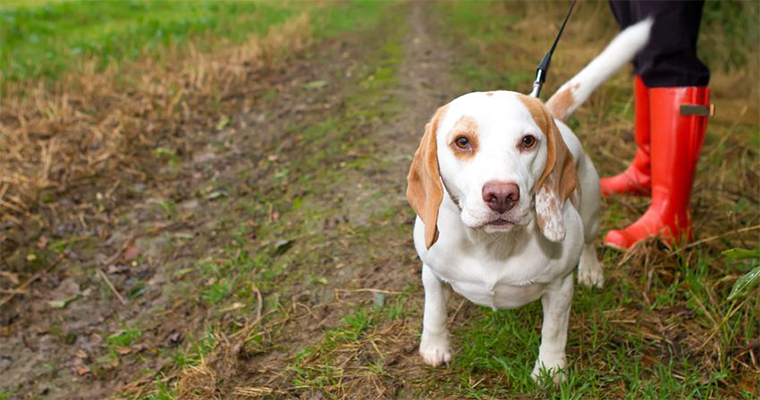
10. Maintain Order with Baby Gates.
Your home can be its own "gated community." Baby gates can help keep the chaos to a minimum when the pets get hectic. For example: you are cooking enchiladas in the kitchen… one dog under your feet might be ok to handle, but if there are 2 dogs plus your friendly kitty - the show is over. Enchilada on the floor. Pet gates are an excellent option for keeping your pet posse organized.
11. Soothe with Tunes.
Pets love music too. Turn on some classical or jazz music to help your pet handle and cope with any separation anxiety. If you plan to leave home for work or the store, playing your pet relaxing music could be the key to keeping them calm and well behaved. For more tips about keeping your pet calm and well behaved, this article might help!
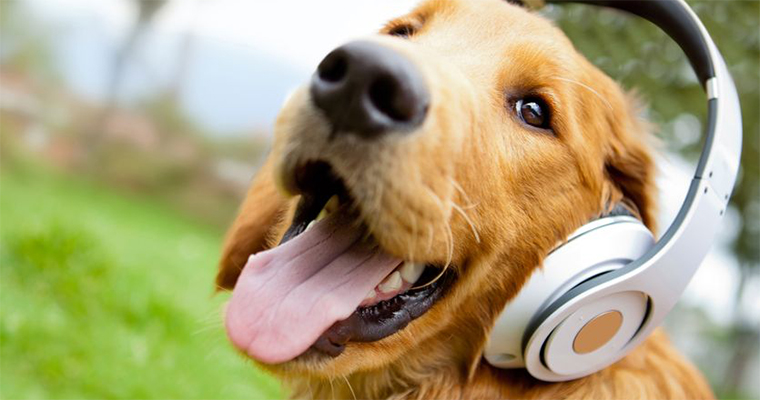
12. Invest in a Vacuum.
Multiple pets (especially cats) leave behind loads of hair and fur. Look for online vacuum reviews to find the best option for your household. Pro-tip: Go bag-less. Vacuuming your house 1 - 2 times per week will keep dust, fur and dander under control. If you are thinking of pushing your vacuuming schedule out for a couple weeks, or maybe a month, pull on some black pants and socks and sit on your floor… this might change your mind.
13. Keep a Folder for Pet Records.
Organize records of veterinary visits, adoption papers, licenses, microchip registration and pet insurance policies in a divided binder. You'll be glad you did in the event of a pet emergency.
14. Keep Air Fresh.
Just because you’re nose-blind to pet odors doesn’t mean your friends & family will be too. Wash dog bed covers, throw rugs and furniture covers on a weekly basis. Light scented candles and open windows on cool days. Keeping a fan running will encourage air circulation too!
15. Feed Cats up High.
It only takes a few seconds for a hungry dog to gobble down your cat’s dinner. You may need to feed your cats first, out of reach of any dogs. One way many pet owners do this - is by making a place on the washer or dryer, or perhaps on the refrigerator where cats can safely eat without stress.
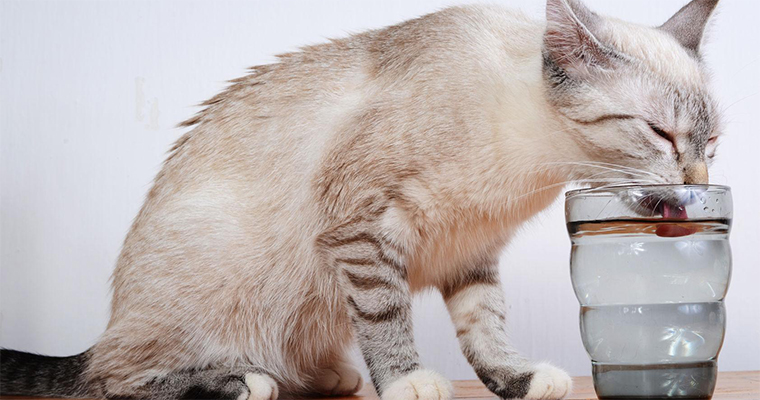
16. Provide a Litter Box for Each Cat.
Cats appreciate clean litter boxes so make sure you have one litter box for each cat. For example, two cats = two litter boxes. If you want to go all out - try training your cats to use the toilet!
17. Keep Litter Boxes Away from Dogs.
Few dogs can resist the mysteries in a kitty litter box. Place the box inside a closet with the door open a few inches and secured with a hook & eye latch so only cats can slip through. You can also put the box in a closed room secured with a baby gate or accessible only by cat door.
18. Set Up a Private Room for Cats.
Sometimes your dogs and cats just won't get along. If that's the case and you’ve got an extra room, give cats their own place with cat trees, beds, etc. If your cats are safe with dogs but still require privacy, install a cat door in a bedroom to allow kitties to sneak in and out as they please.
19. Stock a Pet First Aid Kit.
Items we recommend: Gauze of various sizes; scissors; first-aid tape; wound disinfectant; antibiotic ointment; eye wash solution; hydrogen peroxide; cotton balls or swabs; cortisone spray or cream; thermometer. Here is a premade pet first aid kit.But if you want to make your own, this article will help.
20. Keep Emergency Information On Hand.
Place 24-hour emergency vet clinic contact information and driving directions on the fridge for quick access in medical emergencies. Don’t forget poison control center numbers as well. If you ever find yourself in a pinch for time with a sick or injured pet, this tip can be a lifesaver - literally!

